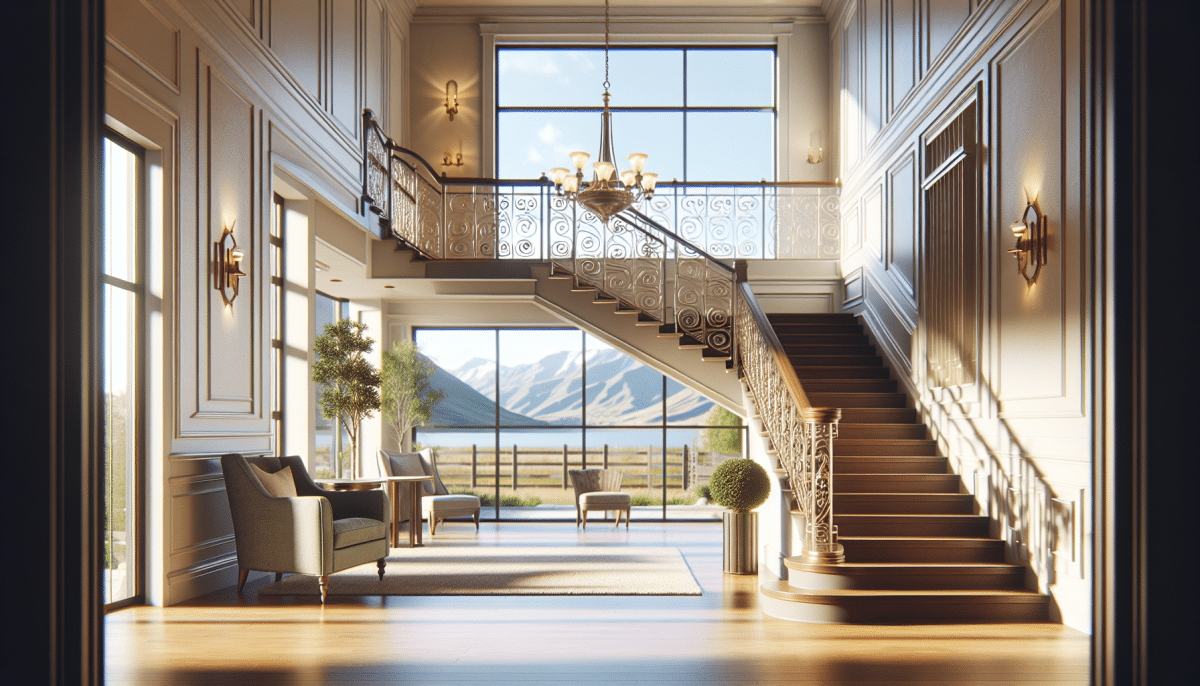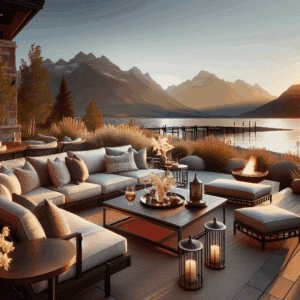Choosing a stair railing might not seem like a big decision—until you’re standing in the middle of your deck project realizing it defines the entire look. A railing isn’t just a safety feature; it’s a design statement that frames your outdoor space, adds value, and affects how you experience it every day. Let’s break down how to choose the right one for your deck and lifestyle.
Understanding What a Stair Railing Really Does
A stair railing does more than keep you from taking a tumble—it visually connects your deck with the rest of your home. It defines edges, sets tone, and adds dimension. Think of it as your deck’s handshake: the first impression visitors get as they climb those steps.
Beyond appearance, a railing must meet safety codes. Most Utah counties—like Davis, Salt Lake, and Utah County—require railing systems at least 36 inches high for residential decks and 42 inches for commercial structures. Post spacing, baluster gaps, and load requirements all play into compliance, so you’ll want materials that are both sturdy and up to code.
Material Choices: Each Has a Personality
Different railing materials bring different vibes. Here’s what each type offers:
Composite Railing
Composite systems—like Trex Railing and TimberTech Railing—blend durability with design. They resist fading, splintering, and warping, which makes them ideal for Utah’s dry summers and snowy winters. The look? Sleek, modern, and clean.
Aluminum & Steel Railing
If strength is your priority, Fortress Railing or Cinch Steel Railing systems might be your match. Metal railings hold up under high winds and temperature swings, staying solid and low-maintenance for years. They often pair perfectly with cable or glass infills for a minimalist aesthetic.
Cable Railing
RailFX Railing takes cable railing to another level. It’s ideal when you want that open, unobstructed mountain view without compromising safety. The thin stainless cables almost disappear against the landscape—clean, modern, and timeless.
Vinyl Railing
For those who want zero maintenance, RDI Railing brings a traditional look with long-term resilience. Vinyl never needs painting or sealing and resists UV damage, so it stays bright even after years in the sun.
Design: The Subtle Art of Framing a View
Choosing the perfect stair railing often comes down to visual flow. You want a system that complements—not competes with—your deck. If your decking has warm wood tones, composite or vinyl railings with matching caps and posts help tie it all together.
Metal railings, especially black powder-coated steel, create sharp contrast and accentuate clean architectural lines. Cable systems blur the boundaries between deck and nature. You can even mix materials—like pairing a wood top rail with aluminum balusters—for a custom, transitional look that feels both modern and classic.
Color and Finish: Where Personality Shows
Railing color can shift the mood of your entire outdoor space. Black and bronze tones create bold outlines and contrast beautifully against light decking. White and tan shades feel bright, coastal, and timeless. Gray tones pair naturally with composite decking for a muted, contemporary look.
Powder-coated finishes are especially durable, resisting scratches and corrosion. Many suppliers also offer textured finishes that reduce glare—subtle but practical touches when you’re out in the midday sun.
The Practical Side: Maintenance and Longevity
Here’s the truth: no one wants to spend weekends sanding or staining railings. Wood railings look great but require yearly maintenance in Utah’s climate. Composite and aluminum, on the other hand, just need a light wash now and then.
Steel systems are tougher but should be inspected periodically for rust at fastener points, especially near sprinklers or high-moisture zones. Vinyl? Wipe it down once a season, and you’re done. That’s why homeowners across Davis and Salt Lake counties increasingly choose low-maintenance options—they last decades and keep looking sharp.
Safety and Code Compliance: Don’t Guess
Local building codes in Utah often mirror IRC standards, but local inspectors can be strict about spacing and load. Balusters should typically be spaced no more than 4 inches apart, and railings should withstand at least 200 pounds of concentrated load.
It sounds technical, but a qualified deck supplier (like Utah Deck Supply) ensures your chosen railing system meets or exceeds code. That’s the benefit of working with pros who handle both material supply and installation guidance—they understand the nuances of local ordinances.
Matching Railing Style to Your Home
Your railing should echo your home’s personality. Craftsman-style homes pair beautifully with composite railings that feature decorative post caps and trim details. Modern builds benefit from sleek horizontal cables or minimalist steel frames. Colonial or traditional homes often look best with classic vinyl or painted composite options.
If your deck extends from an indoor living space, consider how the railing looks from inside. Cohesion matters—your outdoor structure should feel like an intentional extension of your home’s architecture, not an afterthought.
Budgeting: Where to Spend and Where to Save
Railing costs can vary widely depending on materials, style, and custom features. Composite and vinyl options are typically midrange, while cable and steel tend to be premium. If you’re balancing aesthetics and budget, invest in a high-quality top rail—it’s the part people see and touch most—and consider more affordable infill materials for the rest.
Pro tip: buying through a trusted deck supplier often means better bulk pricing and access to higher-grade materials than you’ll find at big-box stores.
Why Local Sourcing Matters
Utah’s environment can be unforgiving—hot summers, cold winters, and high UV exposure. Sourcing locally means materials designed for those extremes. Local suppliers also understand regional styles, HOA rules, and code requirements, helping you avoid costly redesigns or reorders.
It’s not just about convenience—it’s about ensuring long-term compatibility between your railing system and your environment.
Wrapping It Up
A stair railing might be a single component of your deck, but it carries a lot of visual and functional weight. Choose materials that fit your lifestyle, colors that frame your view, and systems that comply with code while complementing your home’s design.
For homeowners across Davis, Salt Lake, and Utah counties, the perfect railing isn’t about following trends—it’s about creating a space that feels timeless and personal.
Ready to Start Your Project?
By Phone: 385-993-5492
By Form: Request a Quote




